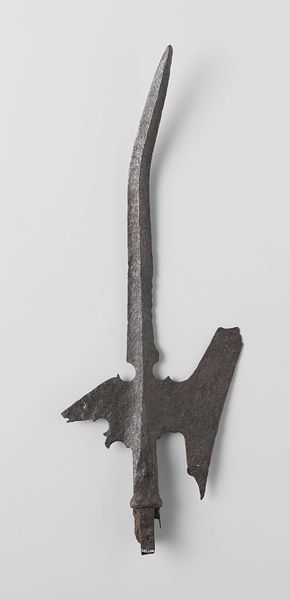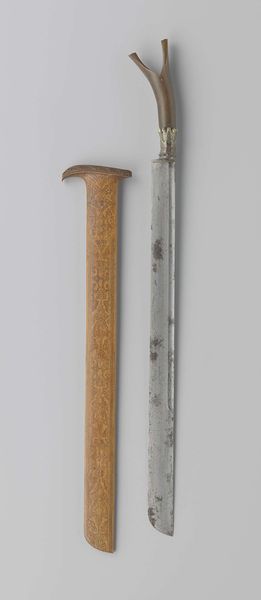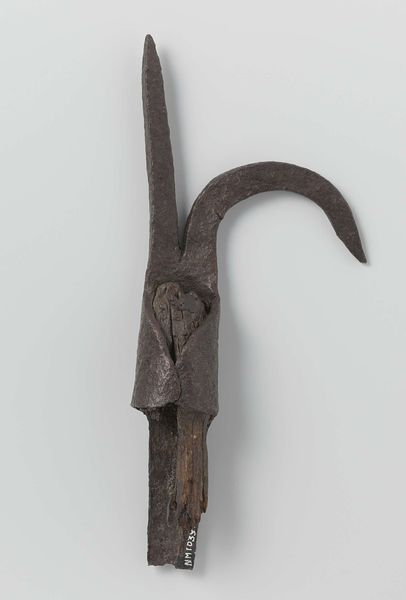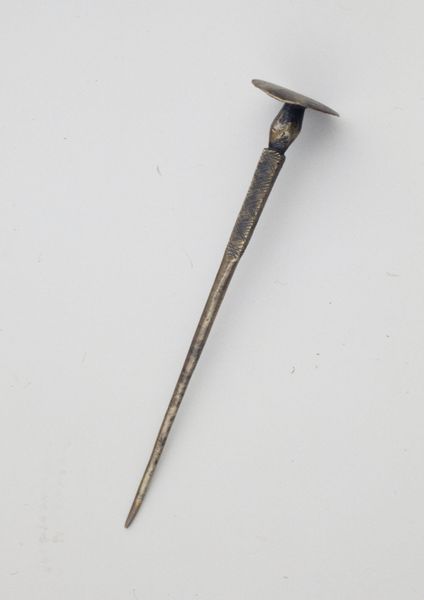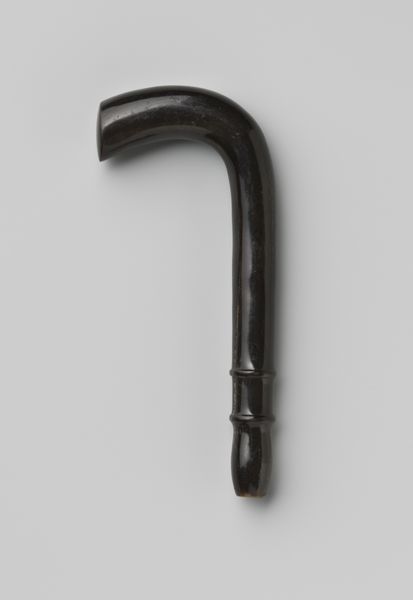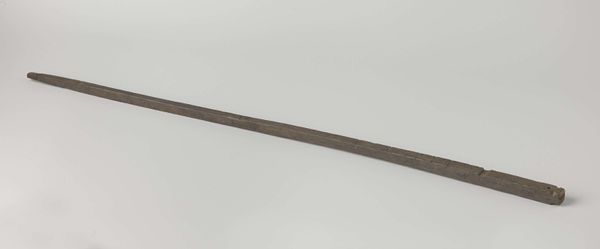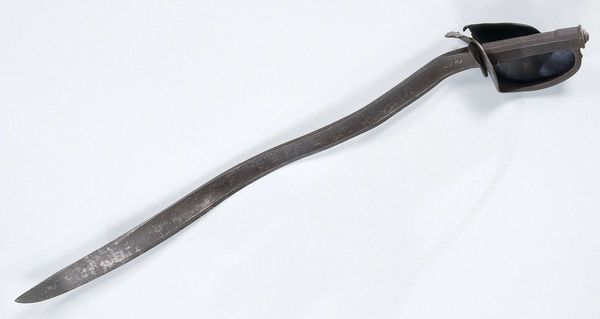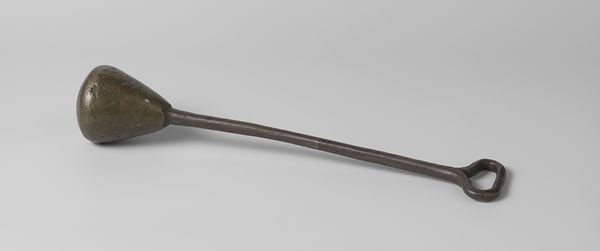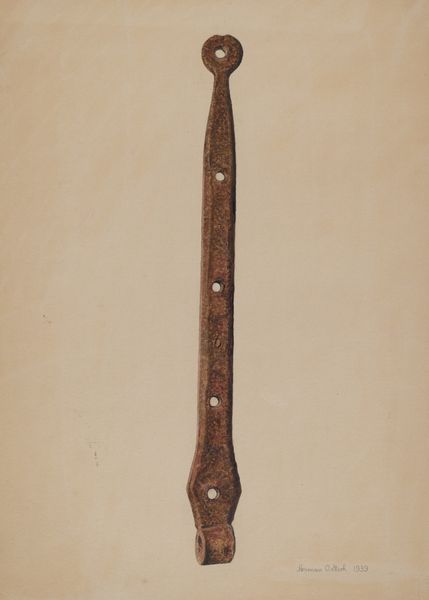
metal, sculpture
#
african-art
#
metal
#
sculpture
#
form
#
sculpture
Dimensions: 13 1/8 × 6 × 1 in. (33.34 × 15.24 × 2.54 cm)
Copyright: Copyright Not Evaluated
Editor: Right now, we're looking at a metal object titled "Iron" from around the 20th century. It's currently held at the Minneapolis Institute of Art. It looks like some sort of blade, but the engraved patterns suggest it might be ceremonial. What do you see in this piece? Curator: Well, its curved blade brings to mind images of agricultural tools, but you are right. These objects are full of symbolic weight, speaking to a visual language of power, status, and potentially, ritualistic use across different West African cultures. Consider how iron, the material itself, became laden with meaning – representing both creation and destruction. Notice the careful detail in the patterned designs. These recall cultural memory. What emotions do you think those evoke? Editor: That's fascinating! Knowing that it wasn't just functional changes my perspective. The detail on the blade gives me a sense of heritage and skill. It almost feels like someone was pouring their soul into making it. Curator: Exactly! The form of this weapon hints at a deeply stratified social structure, maybe with secret societies. I would hazard that the blacksmith wasn’t just forming iron, but cultural power. What kind of story do you think this artifact is telling about its place and origin? Editor: I now feel as if this iron piece connects to cultural narratives that would have meaning for initiates, perhaps evoking themes of labor and social transformation. Curator: Indeed, by focusing on a symbol, one can unlock a culture and society from the past. A tangible item allows the present day to see through new eyes. Editor: I definitely have a better appreciation for how objects communicate meaning across time and place!
Comments
minneapolisinstituteofart over 1 year ago
⋮
Roughly until the 1960s, every five years the Dadiya peoples in eastern Nigeria would celebrate Kal, a festival that marked the culmination of male coming-of-age ceremonies. Young men were initiated into adulthood, learning the moral precepts and social obligations that came with their new role. During the final celebrations they danced branding these sickles above their heads. Decorated with chiseled motifs on the blade, and wrapped in a coiling strip around the handle, these implements resemble actual farming tools. They speak to the value of work and community instilled in the young adults.
Join the conversation
Join millions of artists and users on Artera today and experience the ultimate creative platform.
